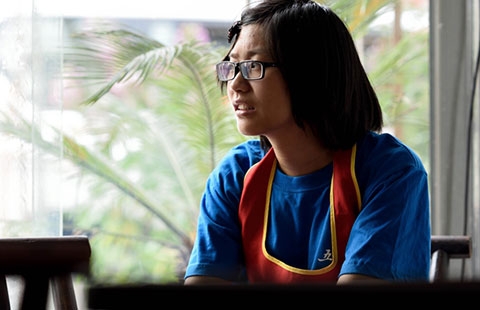Chinese spur medical-tourism growth in the US
Updated: 2015-08-08 01:59
(China Daily USA)
|
||||||||
Liu’s visit
During her June 22 visit to the University of Texas MD Anderson Cancer Center in Houston, Vice-Premier Liu Yandong said China will continue to work closely with the US and deepen cooperation in medical research and practices to curb cancer and other diseases.
After listening to an introduction by Ronald A. DePinho, president of the world-renowned cancer research and treatment institution, Liu reiterated the Chinese government’s resolve to reform its medical and healthcare system, and shared her concerns about the rising number of cancer patients in China, and the prevention, early detection and treatment for the patients.
There are about 3.4 million Chinese diagnosed with cancer each year, of which about 2.1 million will not survive. The five-year survival rate of cancer patients in China is only about 30 percent, much lower than that at the Anderson Center, Liu said at the meeting.
“We have to work with the United States and Anderson Center to learn from the advanced science and technology, particularly in our nation’s fight against cancer, concerning early diagnosis and detection, precision treatment and early prevention,” said Liu, who at the same national conference in April said that medical reform in China was at a difficult and crucial stage.
There are a large number of academic medical centers in the US conducting cutting-edge clinical research in all areas of clinical medicine and historically the largest number of advances in medical and surgical care, particularly in oncology, have been developed at US medical institutions, said Robert Warren, chief of surgical oncology at the University of California, San Francisco (UCSF).
The patient population of Chinese coming from China has grown by more than 25 percent in each of the past few years, said the medical center at UCSF.
As for cancer treatment and care, Warren said since UCSF, UCLA and Stanford universities all have been designated Comprehensive Cancer Centers by the National Cancer Institute. These institutions excel in clinical care of patients with cancer, basic and clinical research in oncology and population-based research.
Xiaodong Jiang is the China head of global venture capital firm New Enterprise Associates (NEA), which has been an active healthcare investor for more than 35 years and has invested in more than 80 healthcare companies that have gone public. He said NEA was investing in companies enabling cross-border clinical and research collaboration between the US and China, such as MORE Health.
For Chinese patients who have the money and want to seek a second opinion, a treatment plan or actual treatment abroad, there are several hurdles that can keep them from doing so.
In China, public hospitals are not required by law to provide medical records in languages other than Chinese. “Many patients just do not have bilingual medical records,” said Lewis.
The majority of the Chinese patients also remain ignorant of the US medical system, facilities, medicines and practitioners. “Like a blind person, I don’t know any American doctors and hospitals and have no idea what I should do first,” said Zhang, recalling how getting connected with MORE Health six months ago helped sort things out.
- Some 200 migrants believed dead in Mediterranean shipwreck
- Chinese FM rejects Philippine, Japanese, US claims on South China Sea issue
- 'Major breakthrough' may help solve riddle
- Hiroshima marks 70th anniversary of bombing
- World 'watching' Japan's next move
- Migrant boat capsizes in Mediterranean, at least 25 dead

 30 historic and cultural neighborhoods to visit in China
30 historic and cultural neighborhoods to visit in China
 Beijing Museum of Natural History unveils 'Night at the Museum'
Beijing Museum of Natural History unveils 'Night at the Museum'
 Sun Yang wins third consecutive 800m free gold at worlds
Sun Yang wins third consecutive 800m free gold at worlds
 Aerial escape
Aerial escape
 Freshmen of top universities from poorer families work part time to reduce family burden
Freshmen of top universities from poorer families work part time to reduce family burden
 17 armed forces take part in Russia military contest
17 armed forces take part in Russia military contest
 A glimpse of traditional Chinese business blocks
A glimpse of traditional Chinese business blocks
 Top 5 most popular drones in China
Top 5 most popular drones in China
Most Viewed
Editor's Picks

|

|

|

|

|

|
Today's Top News
China willing to work with US to contribute to world peace, stability
China asks further investigation on MH370
Police fatally shoot ax-wielding man at Nashville movie theater
Study-abroad tours in US booming
Malaysia confirms plane debris is from Flight MH370
IMF to study yuan inclusion
LA clinic seeks fertility-market access
China and US discuss ways to fight terror
US Weekly

|

|






